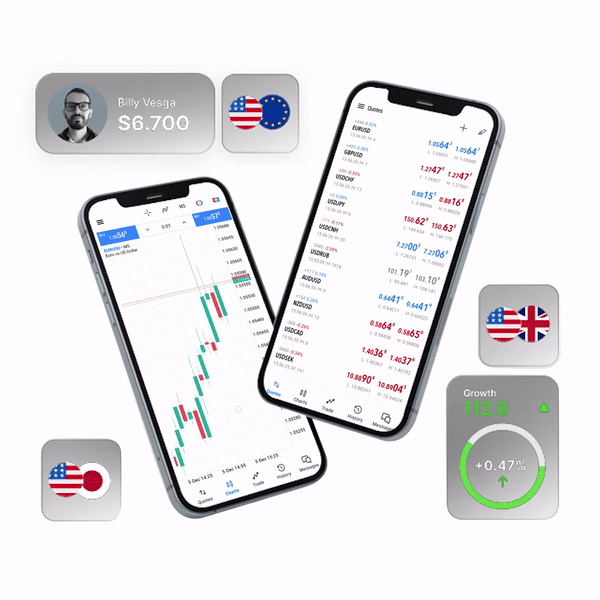In the constantly changing world of forex trading, beginners are always eager to learn how to start trading without venturing into technical analysis, intricate strategies, or sitting hours in front of the charts. Copy trading is one of the solutions that have become extremely popular over the past few years. It’s attractive and easy and provides the benefit of earning while learning.
But like any financial instrument, copy trading has benefits and perils—particularly for beginners.
Let’s describe them plainly and straightforwardly.
What is copy trading?
Imagine you’re following an experienced trader who has been in the market for years. Every time they open or close a trade, your account mirrors it. That’s copy trading. You’re not deciding when to buy or sell; instead, you’re “copying” the moves of someone who (hopefully) knows what they’re doing.
Platforms such as XtremeMarkets have copy trading capabilities that enable newcomers to surf the best performers, see their back histories, and select with whom they want to follow with a few clicks.
It sounds nearly too good to be real.
Well, here’s the straight lowdown.
The Rewards— Why So Many Are Hooked
- No experience required:
The most significant benefit of copy trading that impresses every trader is that it does not require any experience. You don’t need to be an expert to analyze candlestick patterns or read economic charts. All you need is a bit of capital and a trader to follow.
This makes it extremely easy for traders who want to get into the forex markets but without needing to trade manually.
- Learning by watching:
Most newbies use copy trading as a hands-on learning device. They watch the traders they track—how they respond to news in the markets and trade with leverage—and newcomers learn what successful trading is.
Some even transition over time from copy trading to trading on their own.
- Access to diversified strategies:
Let’s assume you replicate three different traders: one is a scalper, one does swing trades, and one does long-term positioning. Without learning every strategy from the beginning, you understand various styles and timeframes. This type of diversification can balance risk.
- Automated trading with flexibility:
Once you have set up copy trading, the system operates autonomously. But it’s not entirely beyond your control. You can suspend, terminate, or modify your copied trades at will. If a trader is not doing well, you can switch to another without inconvenience.
The Risks— What you Must Know First
- Not all experts are truly experts:
Here’s the reality check: previous performance does not guarantee future outcomes. Just because a trader made a good month does not mean they will continue to be consistent. Some traders will take excessive risk that may result in high returns in the short term but can end up blowing accounts in the long term.
Being a newcomer, it is easy to be blinded by high returns without observing the underlying risk.
- Loss of control can hurt:
You leave your money in someone else’s hands when you copy trade. You can’t yell “stop” in real-time if the market collapses or they make a reckless trade. The absence of control can be unsettling, particularly during periods of high volatility. This might irritate someone who wants complete power in their hands.
- Risk of overexposure:
New traders tend to make the error of investing all their money in one trader. If that trader is on a losing streak, it can destroy much of your investment capital. Intelligent copy trading means diversifying risk—not going all-in.
- Hidden Costs and Fees:
Based on the platform, commission charges, profit-sharing arrangements, or spreads may cut into your returns. Read the small print and know the cost structure before going in.
How to do copy trading in a smart way?
Now that you know the both sides of the coin, here’s how to do it in the smart way:
- Begin Small: Don’t put all your budget into copy trading. Use some of your capital and save the rest for education or manual trading in a practice account.
- Screen Traders Thoroughly: See past glitzy numbers. Inspect drawdown rates, typical trade length, consistency, and risk ratings.
- Diversify Your Portfolio: Copy several traders using varied methods. This limits your vulnerability to any one trader’s actions.
- Keep Learning: Even if you’re copy trading, keep reading, watching tutorials, and learning the fundamentals. The more you know, the more informed your decisions will be.
- Review Regularly: Don’t set and forget. Review your performance weekly or monthly. If a trader’s strategy is no longer meeting your objectives, switch.
Final Thoughts
Copy trading is a great entry point for beginners who want to enter the forex market. It provides an opportunity to get involved, learn, and profit—without being stuck in front of the computer screen or learning gory charts overnight.
But it’s not a backdoor to surefire profits. As with any investment approach, there are risks involved. The trick is to deal with those risks knowingly, with discipline and a readiness to continue learning.
Whether you decide to follow others or later trade for yourself, that journey starts with one step—and platforms like XtremeMarkets are available to facilitate that journey with proper tools, clear insights, and easy-to-use technology.
FAQs
- Is copy trading good for absolute beginners?
Yes, provided you begin with a small amount and research the traders you are copying.
- Can I lose funds in copy trading?
If your copied trader loses, you lose, too. Risk control is critical.
- Do I need to check my account every day?
Not necessarily, but once a week to assess performance is a good idea.
- How much money should I begin with?
Begin with an amount you are willing to lose. Even $100–$500 is sufficient to test the waters.












